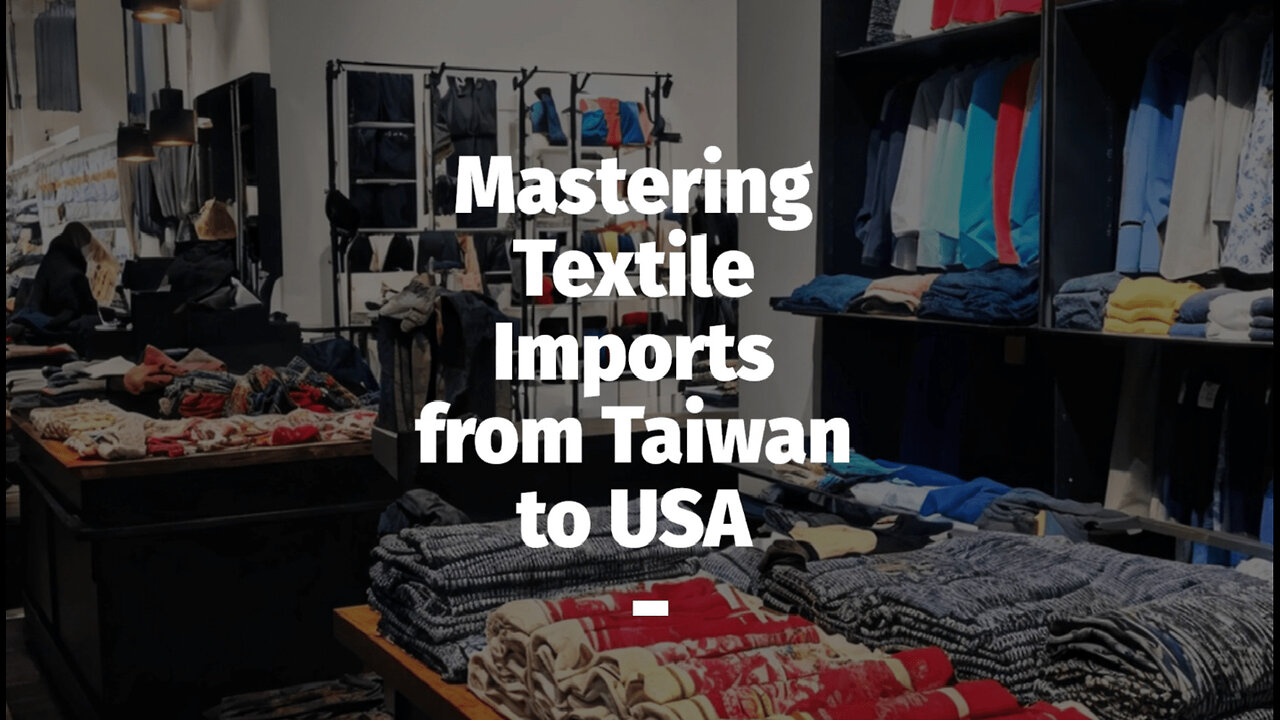Premium Only Content

Mastering the Art of Importing Textiles: Your Guide to Success
ISF Entry | Phone: 800-215-1849 | Email: isf@isfentry.com | https://isfentry.com/
In today's video, we discussed the process of importing textiles and fabrics from Taiwan into the USA. Importing textiles and fabrics requires careful consideration of several factors, including customs bond requirements, Harmonized System (HS) code classification, Importer Security Filing (ISF), rules of origin, compliance with labeling requirements, and the potential benefits of working with a customs broker.
A customs bond is a crucial requirement that serves as a financial guarantee between the importer and the customs authorities, ensuring compliance with laws and regulations. Obtaining a customs bond before initiating any import shipments is essential to avoid delays or shipment refusal.
Determining the correct HS code for your textiles and fabrics is vital for compliance and cost calculation. The HS code is an internationally recognized system used to classify products for customs purposes, and accurate classification is necessary to determine applicable duties, taxes, and regulations.
Filing the ISF at least 24 hours before the vessel's departure from the foreign port is mandatory. The ISF contains essential information about the importer, seller, manufacturer, and shipment. Failing to file the ISF accurately and within the specified timeframe can lead to penalties.
Understanding the rules of origin and any applicable free trade agreements is crucial when importing textiles and fabrics. These rules define eligibility criteria for preferential treatment, such as reduced or eliminated duties. Taiwan has various free trade agreements in place, which can result in significant cost savings for eligible importers.
Compliance with textile labeling requirements is essential to meet regulations in the USA. The Federal Trade Commission (FTC) has specific labeling requirements, including fiber content, country of origin, care instructions, and more. Familiarizing yourself with these regulations and ensuring compliance is necessary to avoid penalties.
Engaging a customs broker is highly recommended when importing textiles and fabrics. Customs brokers have extensive knowledge of import regulations and can assist with paperwork, compliance, and ensuring smooth customs clearance. Their expertise can help you navigate the complex import process, saving you time, effort, and potential penalties.
In conclusion, importing textiles and fabrics from Taiwan into the USA requires attention to detail and adherence to various regulations. Understanding customs bond requirements, determining the correct HS code, filing the ISF, understanding rules of origin, complying with labeling requirements, and considering the assistance of a customs broker are all crucial steps in this process. By following these guidelines, importers can ensure a seamless and compliant import operation.
#usimportbond #isfcustomsbroker #uscustomsclearing #isfentry
Video Disclaimer Here: This educational content is unassociated with US governmental bodies.
00:31 - Understand Customs Bond Requirements
1:00 - Determine the Correct Harmonized System (HS) Code
1:29 - File the Importer Security Filing (ISF)
1:58 - Understand Rules of Origin and Free Trade Agreements
2:27 - Ensure Compliance with Textile Labeling Requirements
-
 8:40
8:40
Tundra Tactical
17 hours ago $0.03 earnedThe Executive Order Wishlist.
564 -
 7:22:52
7:22:52
SpartakusLIVE
16 hours agoSaturday SPARTOON Solos to Start || Duos w/ StevieT Later
90.2K2 -
 28:40
28:40
SLS - Street League Skateboarding
8 days agoTOP MOMENTS IN WOMEN’S SLS HISTORY! ALL THE 9’s - Rayssa Leal, Leticia Bufoni, Chloe Covell & more…
45K11 -
 2:03:03
2:03:03
The Connect: With Johnny Mitchell
14 hours ago $0.56 earnedHow Mexican & Chinese Cartels Control Illegal Marijuana Cultivation In America Using SLAVE Labor
2.67K1 -
 14:46
14:46
Mrgunsngear
15 hours ago $0.63 earnedPrimary Arms GLx 1x Prism With ACSS Reticle Review
3.12K5 -
 22:37
22:37
Degenerate Plays
14 hours agoI'm A Psychic Now - Elden Ring : Part 73
107 -
 2:32:02
2:32:02
Jamie Kennedy
8 hours agoEp. 195 Horror Legend Barbara Crampton
89 -
 23:00
23:00
Exploring With Nug
1 day ago $32.38 earnedHis Truck Was Found Crashed in the Woods… But He’s Gone!
130K8 -
 27:09
27:09
MYLUNCHBREAK CHANNEL PAGE
1 day agoDilmun: Where Life Never Ends
96.7K57 -
 2:58:32
2:58:32
Slightly Offensive
18 hours ago $100.63 earnedHas Trump FAILED US? The ABSOLUTE STATE of The Right Wing | Guest: Nick Fuentes
145K209